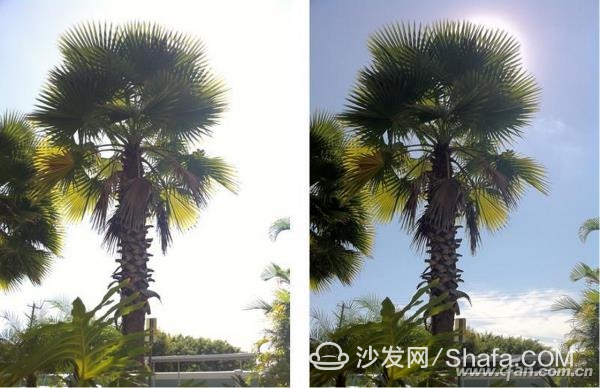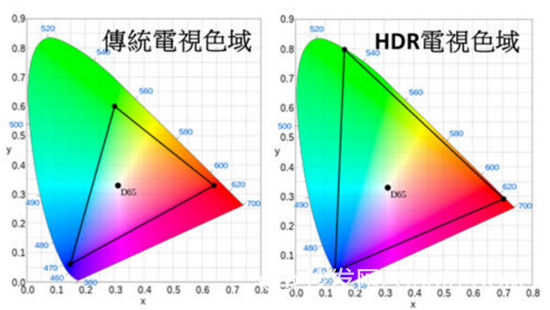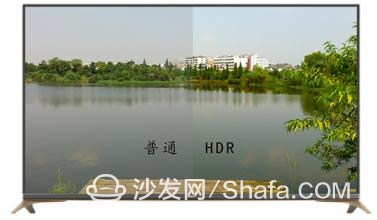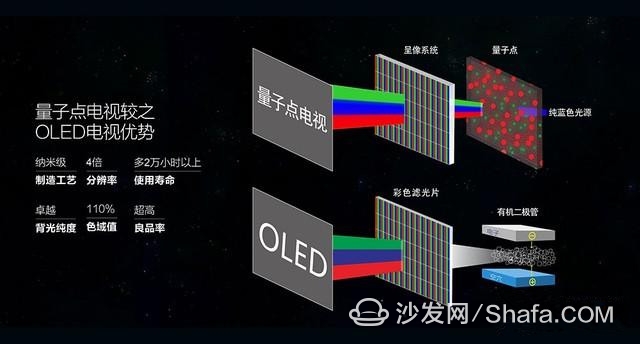From February 22, 2017, Sony set off again and launched several high-end televisions. In the smart TV industry, Sony's positioning has always been a high-end route. In the TV industry in 2016, domestic smart TVs are based on the "Warring States Period," and most of the civilian routes taken from the new ecological field launched by LeTV are closely followed by the appearance of millet TV and Storm TV. Small whale TVs and others have come to test the water. Each manufacturer is full of tricks. There are many new terms, new technologies, and new concepts.
When the civilian-oriented smart TV hits a dark market, the high-end TV market is in full swing and is not far behind. In 2016, traditional TV brand manufacturers launched high-end Internet TV sub-brands, and plans to build high-end television brands gradually, and this trend will be postponed to 2017. At present, Hisense releases the high-end Internet TV sub-brand "VIDAA"; Skyworth continues to overclock the Internet TV sub-brand to open smart TV, TCL launches the high-end brand XESS (Chuangyi), and LG launches the ultra-high-end home appliance brand "LGSignature"; Sony only released the x9000E series and so on.
4KHDR, UHD New Technology Rise
Speaking of the future of television, 4K technology has stolen a lot of limelight. But in reality, the real possibility of a leap in image quality is probably a high dynamic range image (HDR). The UHD Alliance has now incorporated HDR into the UHD Premium standard. If manufacturers want to affix UHD Premium tags on their devices, they must add HDR technology.
Devices using HDR technology can make the screen display clear in both highlights and shadows, giving us better visual effects. The core of TV HDR technology is to increase the brightness of the screen and control the brightness of the dark part of the screen. Enhancing the contrast between dark and light images; the image quality enhancements brought about by HDR technology are intuitive and intuitive. Even ordinary viewers can distinguish with the naked eye, so many manufacturers have HDR technology on television products this year.
For HDR, the most important thing is contrast. LCD TVs can exhibit a minimum brightness of 0.1 nits, the brightest is between 500 and 1000 nits, and the contrast ratio is only 5,000 to 1. If you increase the brightness to 1000 nits, you can achieve 10,000 to 1.
Are all HDR technologies the same?
Sony: Self-developed [4K HDR]
LG: Third Party [DOLBYVISION], [HDR PRO] and [ULTRAHD PREMIUM]
Samsung: Third Party ã€ULTRAHD PREMIUM】
Panasonic: Third Party ã€ULTRAHD PREMIUM】
VIZIO: Third Party [DOLBYVISION]
Hisense: Third Party [DOLBY VISION]
TCL: Third Party [DOLBYVISION]
Samsung's Quantum Dot Display
QLED TV, popularly known as Quantum-dot TV, has been developing over the past few years since the test of the water market. Quantum dot technology has also become more mature and has become the "darling" of high-end color TV consumer. Overall, the trend of quantum dots as the next-generation display technology has become very clear. As a global TV giant, Samsung is committed to creating the ultimate visual experience and has already taken the lead in the industry.
At present, Samsung's second-generation quantum dot display adopts the world's only cadmium-free eco-friendly material and 10-bit panel, capable of presenting up to 1 billion colors. It can be said that the colors of nature are actually moved to the TV screen. In 2016, Samsung was equipped with Quantum Dots technology on the high-end SUHD series to create an unprecedented visual experience.

The quantum dots themselves have light-emitting properties. The quantum dots in the quantum dot film will generate red light (R) and green light (G) when irradiated by the blue LED backlight, and are mixed with part of the blue light (B) transmitted through the thin film. White light, which enhances the lighting effect of the entire LCD backlight, increases the color gamut by more than 30%, makes the color more vivid, and does not increase the thickness of the LCD panel. Therefore, the quantum dot technology can greatly improve display performance such as color gamut, brightness, and contrast of the display device.
Quantum-dot technology TV's indicators are all substantially higher than ordinary LCD TVs, which is very advantageous. Currently, display giants represented by TCL, Samsung, and Hisense have stepped into the quantum TV camp to jointly promote the development of quantum dot technology on display devices. It is further reported that Samsung will fully abandon its OLED TV panels and switch to quantum dot display technology. Does this mean that Samsung believes that quantum dot display technology has more potential than OLED?
The future of the display industry has always been regarded as the PK of OLED and quantum dot technology. They all have self-luminous properties. The current quantum dot technology has exploded in the display industry and has matured. The development of OLEDs on small-sized screens is also said to have risen. As a result, it is not known whether these two technologies will be used as winners or their respective development.
IPS hard screen LCD panel becomes high
In the world's top LCD display areas, such as EIZO, NEC, APPLE and other professional display products, LCD panels with IPS hard screen technology are used.
Industry players love IPS hard screens, mainly because of their significant advantages in dynamic resolution, color reproduction accuracy, and viewing angle. First of all, compared to the traditional soft-screen LCD, IPS hard screen has a stable liquid crystal molecular arrangement structure, faster response, and thus has a strong expression in the dynamic resolution, completely eliminating the soft-screen LCD display in the external pressure When it shakes, the blurring and watermark diffusion phenomenon appears, and after the fast screen is displayed, the afterimage and tailing are eliminated. Therefore, IPS hard screens are used in the aerospace, automobile, and subway industries that are in motion all the time. Get quality without any loss. It is reported that the newly opened Beijing Metro Line 5 and bus TV use IPS hard screen LCD.
Due to the unique horizontal molecular structure of the IPS hard screen, it has no watermarks, shadows and flashes when touched, the screen quality is extremely stable, and the lifespan is also improved compared to the soft screen television. The theoretical use time increases from the 50,000 hours of the soft screen. To 70,000 hours or more.
BacklightMaster Drive Dynamic Backlight System
The quality of a TV depends on the panel. The quality chip and the backlight module (excluding OLED TVs) cannot be separated from the backlight. This is known to all of us, and the backlight is divided into two types: direct type and side type. Species. Many high-end early high-end televisions use direct-lit backlights. However, in recent years, with the continuous development of side-entry backlights, side-entry backlights can theoretically be thinner. Therefore, side-in-line backlighting has almost become mainstream. Only a few high-end TVs will choose the direct type.
Represented by "Sony Dafa" Z9D, first of all, "Backlight Master Drive" is based on the form of direct-lit LED backlights. On Sony's 65-inch prototype, it can be clearly seen that a large number of LED lamps are arranged behind the LCD panel. Zhu, although Sony did not disclose the number of LED beads, but from the visual effect, can be imagined as the density of the array formed when many 7 cells are closely aligned.
For LCD TVs, the use of direct-type backlights in itself means better regional light control capabilities, and the use of such dense backlights means that the precision of backlight control can reach an extremely astonishing level. In fact, if you remove the LCD panel, simply look at the backlight matrix in “Backlight Master Driveâ€, you can see the image effect similar to the outdoor LED large-screen ads, but the image becomes black and white (because the backlight system only changes in brightness ), quite shocking.
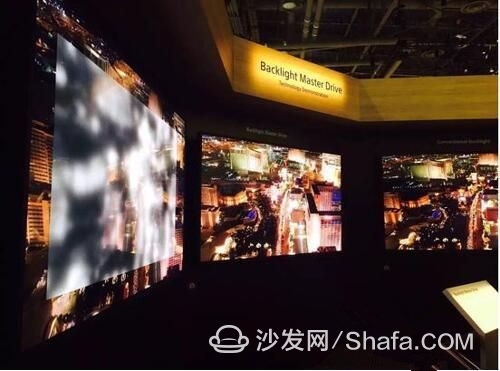
Regardless of the processing of panel materials and drawings, these years of smart TV technology are repeatedly seeking breakthroughs, whether it is from the artificial intelligence of Xiaomi TV or the Harman Caton-certified audio of LeTV Super TV. The technology to a better experience, each manufacturer is creating black technology, each new product release, will bring us a brightening effect, in more and more intelligent today, digital entertainment in the living room is still a very Important areas, in the future development, with higher technology and stronger competition to enter, we are worth looking forward to.
Smart TV/box information can focus on smart TV information network sofa butler (http://), China's influential TV box and smart TV website, providing information, communication, TV boxes, smart TVs, smart TV software, etc. Answering questions.
Self-healing Hydrogel Screen Protector
The Screen Protector has a self-healing technology that can automatically eliminate small scratches on the Protective Film within 24 hours. Significantly reduce dust, oil stains and fingerprint smudges, anti-scratch.
The Screen Protection Film is very suitable for curved or flat screens. The Soft Hydrogel Film perfectly matches the contour of your device. Will not affect any functions of the phone.
The Ultra-Thin Protective Film with a thickness of only 0.14mm uses 100% touch screen adaptive screen touch screen technology, complete touch screen response, high-tech technology makes the screen touch to achieve zero delay, ultra-thin material brings you "realism".
The Protection Film has excellent clarity and incredible toughness, providing a high level of clarity and a glass-like surface, highlighting the sharpness of the most advanced smartphone display images and bright colors.
If you want to know more about Self Repair Screen Protector products, please click the product details to view the parameters, models, pictures, prices and other information about Self Repair Screen Protector.
Whether you are a group or an individual, we will try our best to provide you with accurate and comprehensive information about the Self Repair Screen Protector!
Self-healing Protective Film, Self-repairing Screen Protector,Self-healing Screen Protector, Self-Healing Hydrogel Film,Hydrogel Film Screen Protector
Shenzhen Jianjiantong Technology Co., Ltd. , https://www.jjthydrogelmachine.com
